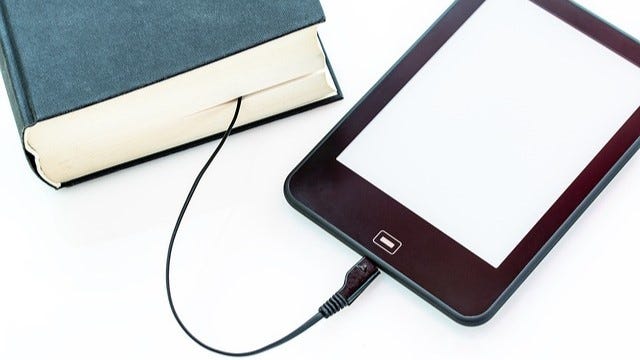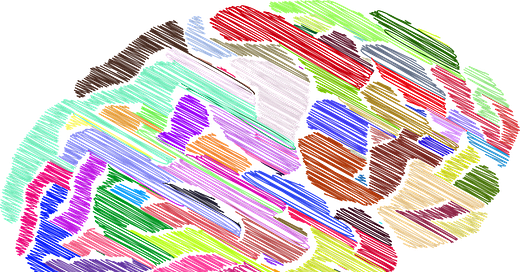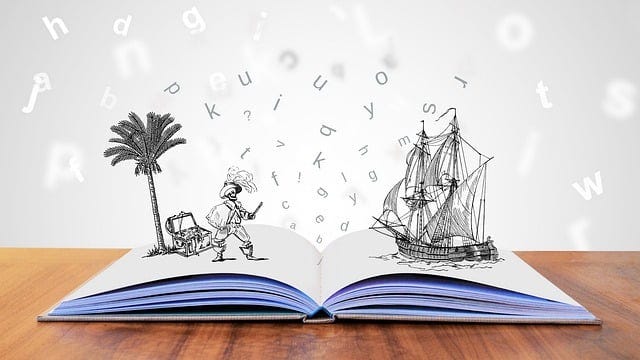As a children’s librarian who is also neurodivergent, chronically ill, and has a reading disability, this topic is near and dear to my heart. I was the kid who devoured books, but it was through pure stubborness. I loved stories, so reading slowly and having ADHD wasn’t going to stop me from getting them. But when my chronic illness set in, along with its associated brain fog, stubborness was no longer enough. I found myself completely unable to read anything for many years.
So how did I get here?
There are a lot of things that have helped! There is no one-size-fits-all solution, of course, but I hope that if you or your kiddo find yourselves unable to read even though you want to, something here might help.
Audiobooks

This is where I started. I resisted them for a long time: I had a lot of elitism and internalized ableism to contend with surrounding audiobooks. I’ve written a whole post that confronts and debunks those issues, so I won’t go into it again here. Once I addressed that, I experimented with them to see if they would work. I use crafting as a “fidget” to help me focus and with that, both my reading and my creativity soared.
One of the few downsides to audiobooks is their availability in libraries. The licenses for them are limited and prohibitively expensive for many library systems. This means that libraries don’t have audiobooks for every title, and the waits for holds, especially for popular titles, can be weeks or months long. If you are having trouble getting ahold of audiobooks, I encourage you to check in with your accessibility resources person if your library has one: there is a federal program available to help those with disabilities get more access to audiobooks and talking books.
If you don’t know where to start with audiobooks, check out the Odyssey Award winners. This award is given annually by divisions of the American Library Association to audiobooks that represent the best productions.
Audiobooks are still my preferred way to read, and it’s more than okay if you stop here! However, some people really value their time reading print, and there are a few great books available without audiobook versions. So if you really want to get back into print, read on.
Graphic Novels

Graphic novels are so much more than superhero comics and manga (though those are pretty great too). There are graphic memoirs, graphic histories, graphic adaptations of popular novels, books created just to be graphic novels, and so many more. They are such an amazing format for people struggling to read print. The pictures add visual interest and help tell the story. Having everything in sequential panels helps your focus flow through the page naturally while the panel borders are a cue to contain your focus to that place. Since the text doesn’t have to carry the load of painting the pictures in your mind, graphic novels tend to be much quicker reads and more story-driven than many print novels. And, as much as some like to hate on “Comic Sans” and other comic book fonts, those fonts are easier to read for many people with dyslexia and other reading disabilities.
If you’re looking for a place to start, check out the Eisner Awards. Sometimes dubbed the Academy Awards of graphic novels, Eisners are awarded annually at San Diego Comic-Con.
Middle Grade and Novels in Verse
Middle grade novels, aside from having some of the best storytelling, also tend to have shorter chapters and larger font which helps with the overwhelm of seeing too much text at a time. They also have loveable characters and almost always have happy endings, both of which contribute to warm feelings and the production of serotonin and dopamine. These associate reading with pleasurable experiences in your brain, making it more likely that you’ll want to pick up another book when your done.
If you have a favorite genre or a favorite book from childhood, start there. If you need more suggestions, the pinnacle award of children’s literature is the Newbery Award. You can also look at book lists, “staff picks,” and displays at your local library to help you choose.
Ereaders

I still have trouble with dense print books or those with smaller fonts, and on bad sensory days, white pages are just too bright. Having an ereader has helped so much with this! I recommend one that is a dedicated ereader with a more matte screen such as the Kobo Clara, Nook Glowlight, or Kindle Paperwhite. Ereaders like these are the best options for distraction-free and sensory-friendly reading. I have mine set to dark mode and amber light. I also have the font set larger than default and changed it to Open Dyslexic. With these settings, I have been able to read books that seemed out of reach for so long.
I can’t begin to express how much I love having my joy for reading again. If you’re like me and you’ve read this far, I hope some of these strategies can help you, too.
Happy reading!





